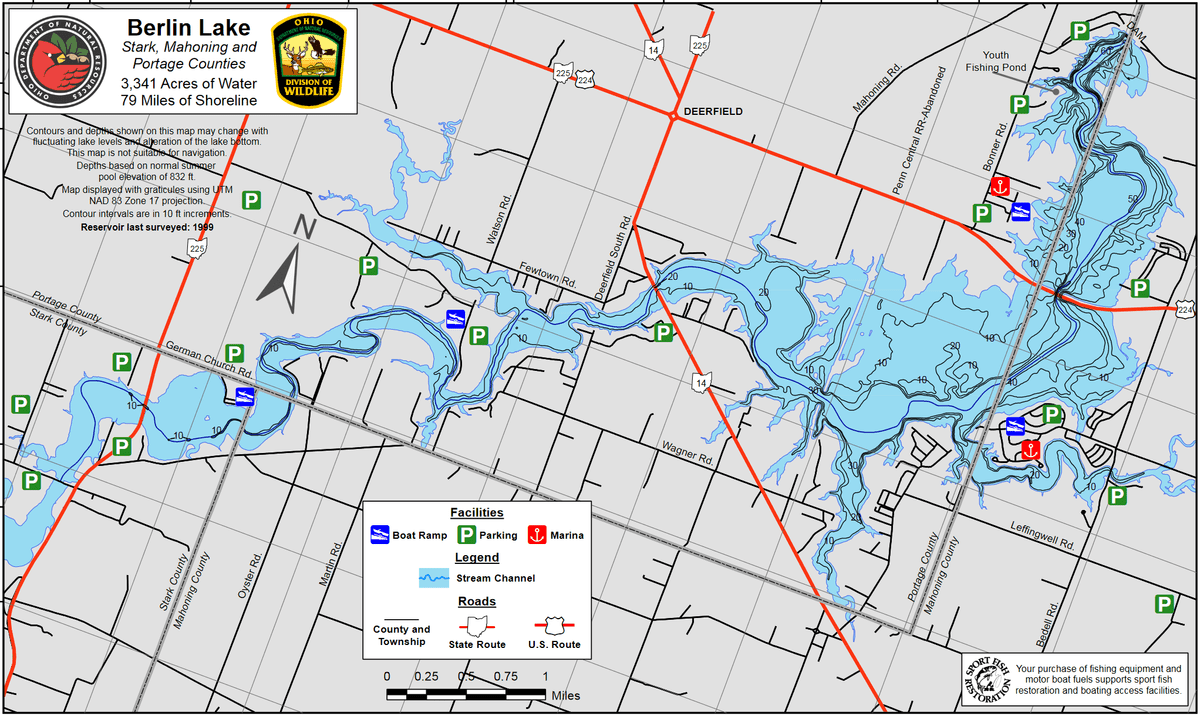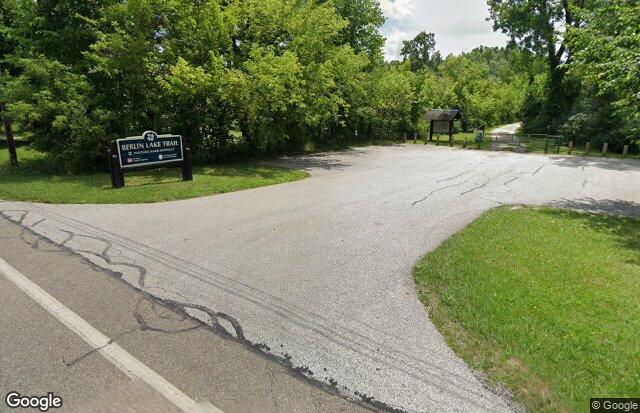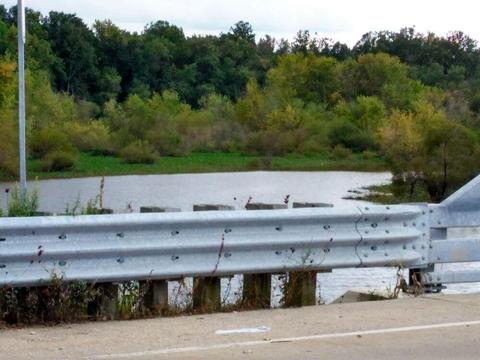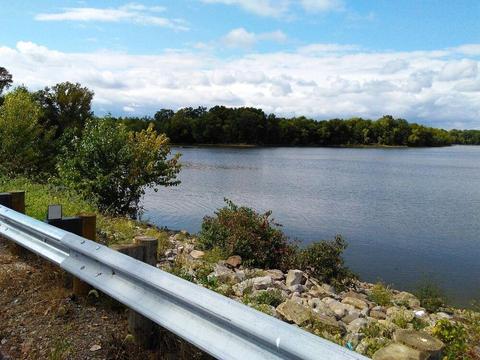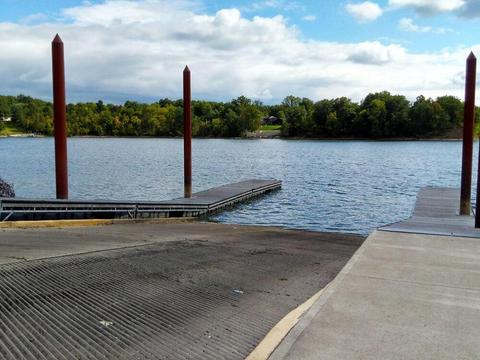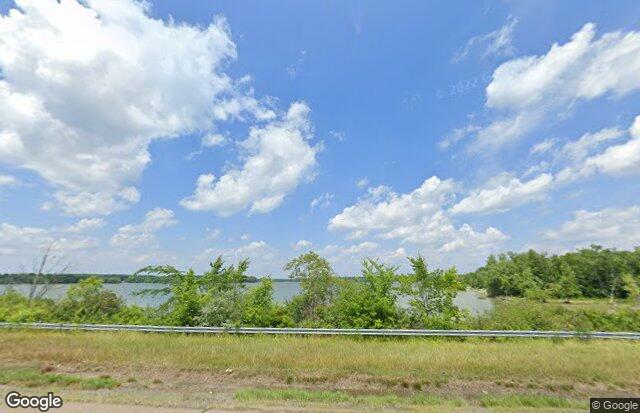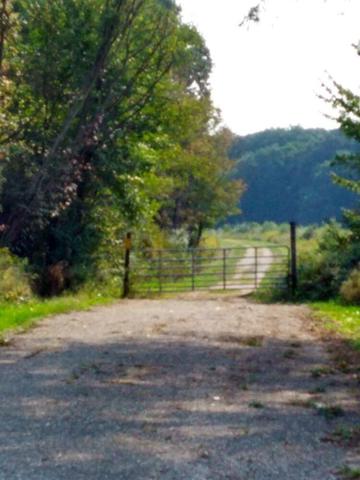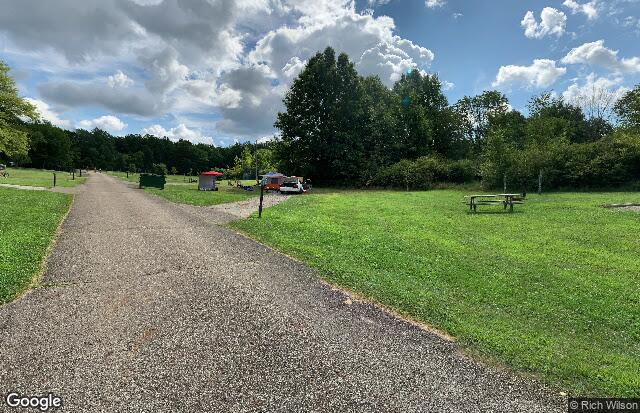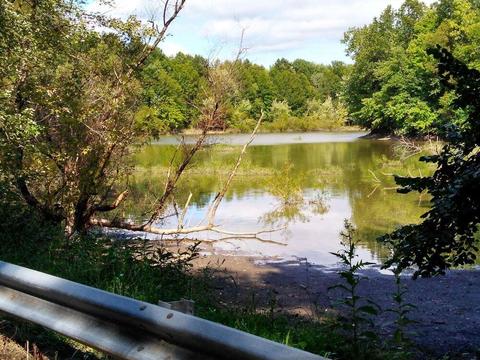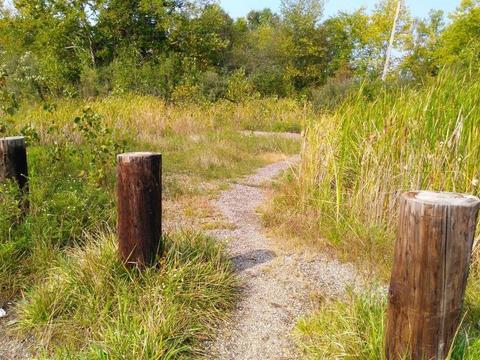
Berlin Lake
Berlin Lake
Deerfield, Ohio 44411
Official WebsiteUS Army Corps of Engineers Water Management website
Berlin Lake map
Tips for Birding
Berlin Lake was formed by the damming of the Mahoning River. At its maximum pool (springtime) the lake covers 5500 acres. Starting in July, the water is let down at a rate of 1 foot per month through November. These lower water levels form hundreds of acres of extensive mudflats.
The mudflats start to appear in the southwest region and proceed northeast as the draw-down is continued. The surface area at the minimum pool is about 3600 acres leaving around 1900 acres of exposed shoreline and mudflats. These conditions will occur in years with average or below average rainfall.
The lake stretches 17 miles along the path of the river. This leaves many nooks and crannies to be explored. Three main highways cross the reservoir; all good places from which to observe the large expanses of water. The first is where US-224 crosses west to east. This crossing is at the largest and deepest area in the reservoir, about 1 mile south of the dam.
The second highway crossing is OH-14, which runs diagonally northwest to southeast coming out of Ravenna and bisecting the lake. The third crossing is in Stark county where OH-225 crosses the southwest corner of the reservoir and continues into the city of Alliance.
Surrounding the lake is 6800 acres of land owned and managed by the Ohio Department of Natural Resources. From grassland to mature deciduous forest, most any habitat can be found. Most areas are open to the public but there are no improved trails to speak of.
Maps and information about the area can be obtained from the resource office located on Bedell Road. To get to this office, cross the lake going east on US-224 and take the first road south. This is Bedell Road. Go 0.5 miles to the headquarters on your right. Also, just south of the headquarters is The Mill Creek Campground; a large and scenic campground.
For those interested in shorebirds, the best areas to find them are the Berlin Mudflats north and south of the Price Street Bridge. To get to this area, go south about 1 mile from the OH-225 bridge and turn west on Price Street. Cross the bridge and enter the large parking area on your right. From this point, one can see several acres of mudflats when conditions are right. By crossing the roadway and hiking the west shoreline, south of the bridge, you can explore over a hundred acres of mudflats. Further southwest, this area opens up to reveal mudflats that cannot be seen from any road.
The mudflat areas, both east and west of the OH-225 bridge, are also choice locations for shore birding. This area has also been a very productive region in recent years. Parking here, though, can be difficult as there is no parking available in the immediate vicinity of the bridge. Parking is permitted, however, if you go beyond the “No Parking” signs and walk back to the bridge area. The US-224 bridge area, later in the season, from late August through November, can also be very rewarding.
The best strategy here is to park at the west end of the bridge and walk south along the west shoreline. Here you can walk miles of shoreline/mudflats encountering cove after cove of choice habitat. This area has also been a good area for migrating waterfowl, raptors, and gulls.
Open all year.
Parking areas south end: Greenbower Road, Price Road, German Church Road.
Middle: Fewtown Road, the OH-14 Bridge.
North end: the US-224 bridge, boat ramp parking area, dam picnic area, and the headquarters building.
A spotting scope is highly recommended for viewing birds on the Berlin Lake Mudflats.
Birds of Interest
Winter
Gulls, late shorebirds (Dunlin, Killdeer), Bald Eagles, and wintering waterfowl.
Spring
Migrating ducks (March and April), Migrating passerines (May).
Summer
Nesting species: Three Osprey nests; bridges have Cliff Swallows; several species of nesting warblers (Prothonotary, Hooded, Blue-winged, Redstart); Wild Turkey, Red-shouldered Hawk; also Sedge Wrens are found in the area with some frequency.
Fall
Shorebirds! Starting mid-July through October, many species and large numbers of shorebirds can be found. The peak time for viewing is the last two weeks of August and first two weeks of September.
About this Location
Berlin Lake spans three counties. The eastern portion is in Stark County, the middle portion is in Portage County, and the western portion is in Mahoning County. See the map for the county line boundaries.
Berlin Lake lies in the northeastern part of Ohio at the junction of Stark, Portage, and Mahoning counties. The lake is located on and is accessible from US-224 and OH-14 and OH-225. The U.S. Army Corps of Engineers constructed Berlin Lake in 1942 on the Mahoning River. The Congressionally authorized purposes were flood control, low flow augmentation, water quality control, and water supply. Berlin Lake has a mean depth of 23 feet with a maximum depth of 55 feet. Annual water level fluctuations can be as much as 20 feet. Mud, sand, and gravel make up most of the bottom composition. Rock ledges can be seen along the original river channel at low pool level.
Restroom facilities can be found at the headquarters building, the picnic area by the dam, and the Circle Restaurant in Deerfield.
Features
Restrooms on site
Content from Ohio Ornithological Society and Susan Carpenter
